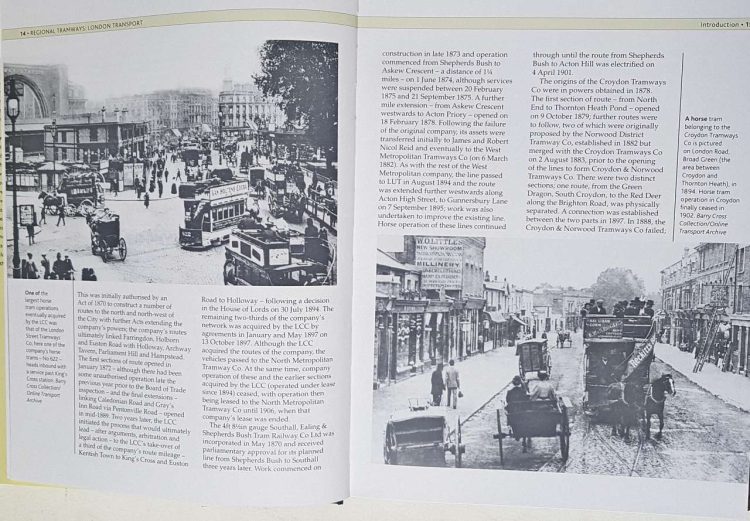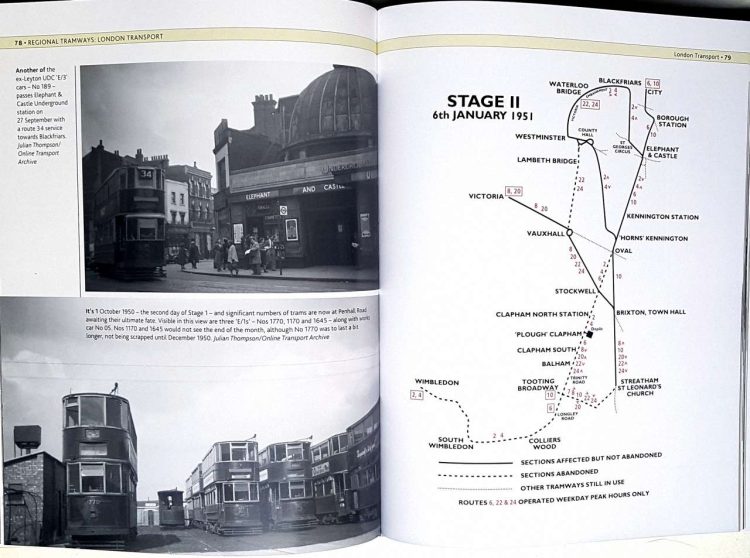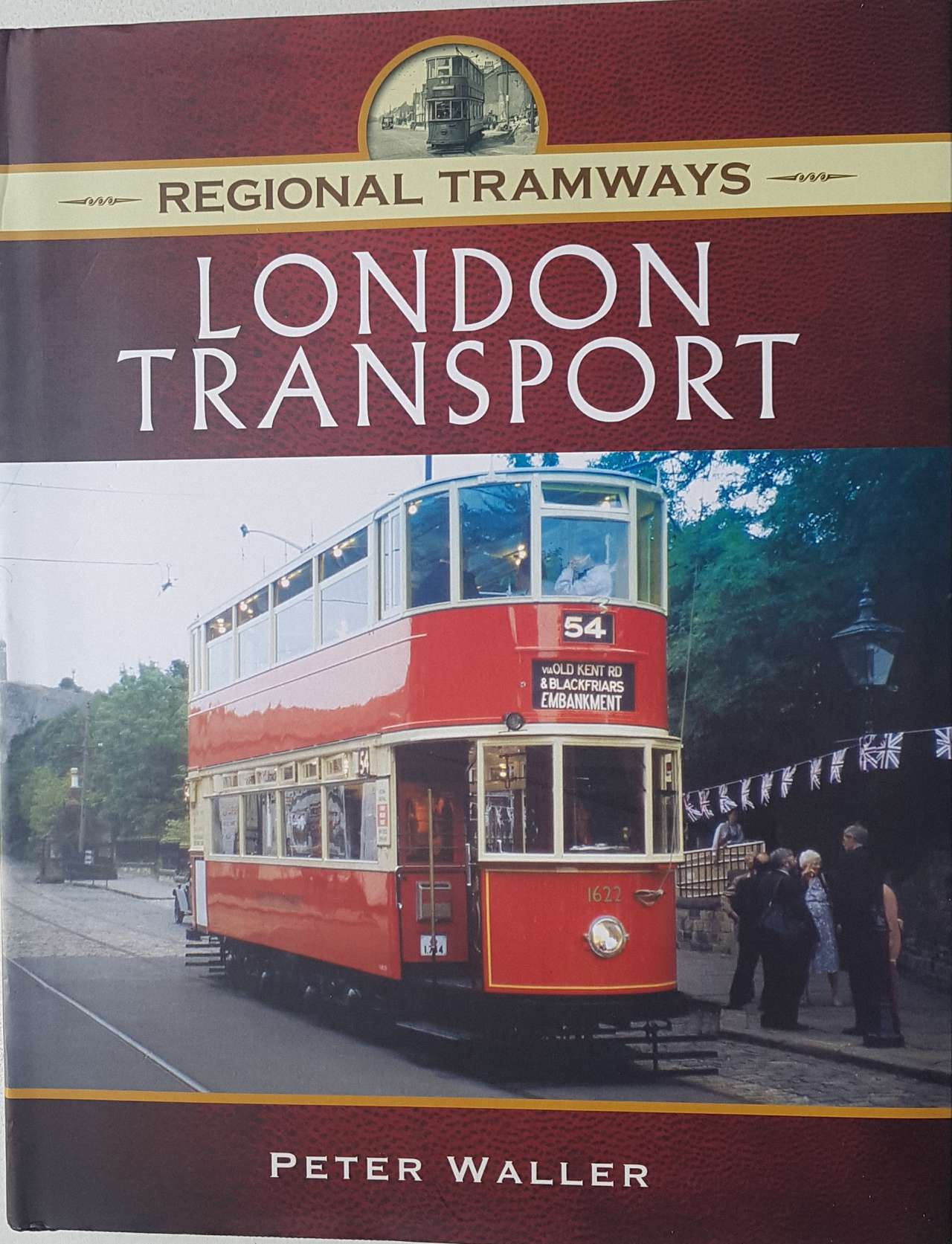Published in 2019, this is the last book in the Regional Tramways series from publishers Pen & Sword. It provides a comprehensive history of London’s trams from their inception in 1861 to their demise, and resurrection with the opening of the Docklands Light Railway and Croydon Tramlink.
Written by Peter Waller, the hardback book measures around 282 cm x 216 cm and is 165 pages long. It has a published price of £25, but at the time of writing can be picked up on Amazon for around £17.99. The quality of the finished product is well up to Pen & Sword’s usual standard.
The book tells the story of London’s trams from the pioneering horse-drawn tramways through steam and cable-powered trams, to electric tramways, and describes ‘Operation Tramaway’ when almost 1,000 trams were eliminated from the streets of London in less than two years.

The book also has an overview of London trams that have survived into preservation.
The book is split into an Introduction and three chapters, and has 200 mainly black and white photographs and a few maps, as well as a comprehensive description of trams by their fleet numbers.
Unfortunately, the book title doesn’t reflect the content as London Transport didn’t come into being until 1933, 72 years after the first tram ran in London.

The layout of the book seems a little strange, as the Introduction covers a fairly detailed description of the evolution from horse-drawn to electric trams, followed by descriptions of tramways operated by individual corporations such as Barking and Deptford, London County Council, and by tramway companies themselves such as London United Tramways. It would have been better to have a brief introduction followed by separate chapters for types of propulsion (horse-drawn, electric, and other), corporation tramways, and company lines.
The bulk of the book covers the period after 1945 when the system was closed down. However, the chapter is titled “London Transport” when that is the title of the book. The chapter is 100 pages long, with the first 70 pages not divided into sections, even though there would seem to be an opportunity to divide it into the various stages of removing the trams.

I was impressed with the sheer number of historic photographs, although the majority of older ones were rather grey and washed out and would have benefited from a little editing to increase their contrast.
The book is available to purchase from Amazon and from Pen & Sword.
We would like to thank Pen & Sword for providing RailAdvent with a copy of the book for review.






Responses